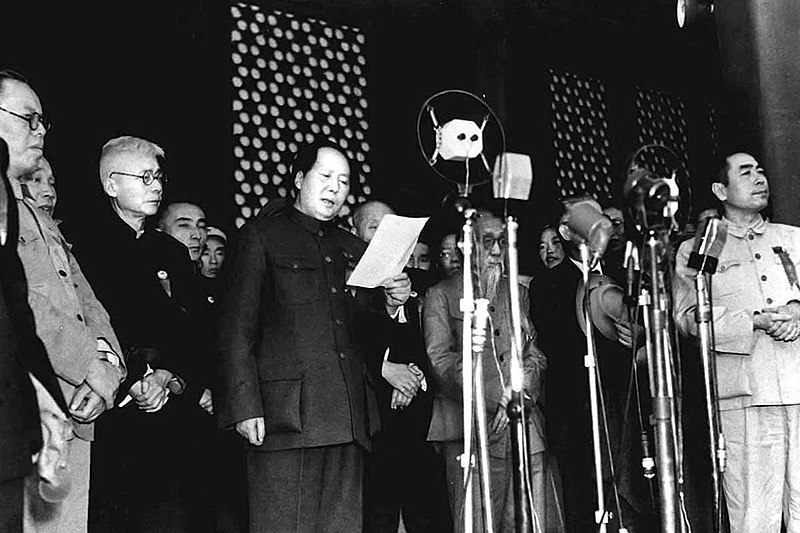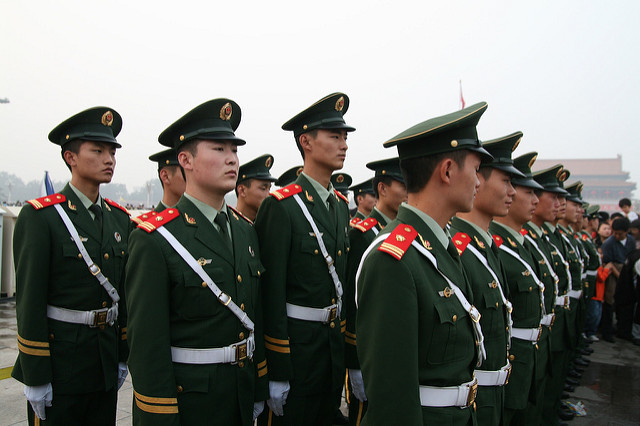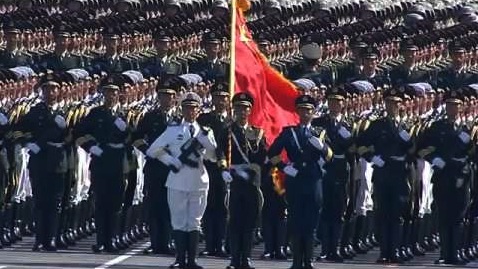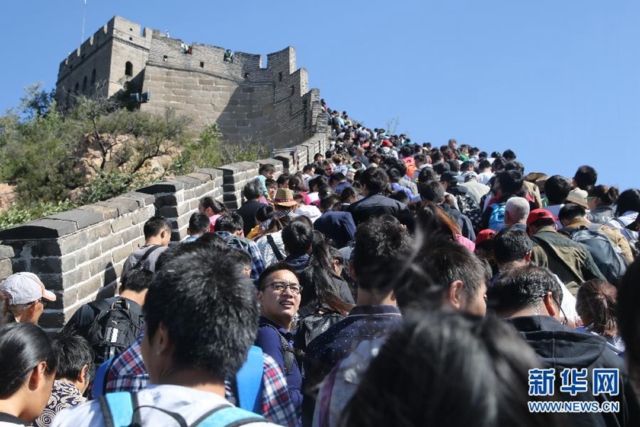The Explainer is where we explain an aspect of Chinese life. Simple. So now you know.
China’s National Day Holiday – 国庆节, Guoqingjie – otherwise known simply as ‘October Holiday,’ is an annual weeklong public holiday.
It is one of two semi-annual ‘Golden Weeks’ – 黄金周, Huangjinzhou – a name given to seven-day national holidays in China. China’s other Golden Week' is Spring Festival, otherwise known as Lunar New Year.
National Day falls every year on October 1. The holiday commemorates the day in 1949 that Communist Party Chairman, Mao Zedong, famously first raised the Chinese National Flag in Tiananmen Square and proclaimed the birth of a new nation, the People’s Republic of China (PRC).
Origins of the People’s Republic & National Day
 Mao Zedong and other Chinese leaders at Tiananmen Square on October 1, 1949. Image via Wikimedia Commons
Mao Zedong and other Chinese leaders at Tiananmen Square on October 1, 1949. Image via Wikimedia Commons
The story starts with the Chinese Civil War (1927-49), which began when Chiang Kai-Shek, the leader of the Nationalist Party, aka Kuomintang (KMT), began to purge communist ideology and its advocates from Chinese politics, after denouncing it as contrary to the origins and ambitions of his nationalist revolution.
The Communist Party of China (CPC) moved underground and began an insurgency that developed into armed rebellion.
The war between the Nationalists and Communists lasted around 20 years, with a brief hiatus during World War II, when the parties formed a loose alliance to combat the Japanese invasion of China, known in China as the War of Resistance against Japanese Aggression.
The Civil War resumed in 1946, and the intervention of World War II had seen the balance of power shift in favor of the Communist Party. This marked the beginning of the end of the conflict, and, by the close of the decade, the Communist Party had consolidated their control over the Chinese mainland.
On October 1, 1949 the People’s Republic of China was founded. Mao named Beijing the capital and raised the new flag over Tiananmen Square. Eventually, the Kuomintang were beaten into a retreat to the island of Taiwan.
One day later, on October 2, the new government passed the ‘Resolution on the National Day’ and ever since, October 1 has been a day of celebration.
The National Day celebration was extended to seven days in 2000 as an initiative to boost the economy through increased domestic tourism and trade.
Workers are typically given three to seven days of paid vacation, and the rest of the days off are made up from the weekends before or after the holiday.
What to Expect

Soldiers in Tiananmen Square prepare to raise the flag on National Day. Photo via Ian Holton/Flickr
Every year, celebrations in Tiananmen Square begin with the raising of the flag led by uniformed soldiers at sunrise on October 1.
The whole celebration is over in a few minutes, but if the weather is nice you can expect crowds of thousands.
Tiananmen Square has also played host to military reviews and parades on the big day, following in the style of the inaugural one in 1949.
These parades are held on a small scale every fifth anniversary and are grander every 10th.
 The 60th year anniversary parade on October 1, 2009. Screengrab via YouTube
The 60th year anniversary parade on October 1, 2009. Screengrab via YouTube
During the holiday period, offices, factories, warehouses and government operations will close down and many of the country’s internal migrant workers will travel home to celebrate, although increasingly people are opting for vacations abroad.
Most of the travel this year will be done during the extended holiday’s first and last days (September 29 and October 6), which can bring China’s infrastructure to a virtual standstill.
It is often recommended to make travel arrangements for the days before the Golden Week in order to avoid the surge in traffic.
China’s most iconic attractions usually see their biggest crowds during the holiday, so if you want to get the most out of visiting these places, it may be best to avoid them during Golden Week, and instead take the opportunity to explore China’s lesser-known scenic spots.
The Great Wall has stood for nearly 2,000 years and will probably still be around after October 6. We’d recommend not visiting it during the Golden Week, unless you’re looking forward to taking in all its wonder with crowds like this...
 Image via CGTN
Image via CGTN
Same goes for People’s Square in Shanghai...
 Image via bricoleurbanism/Flickr
Image via bricoleurbanism/Flickr
And West Lake in Hangzhou...
 Image via CGTN
Image via CGTN
This article was originally published on Thatsmags.com in September 2016. It has been updated and republished on September 26, 2023.
For more of The Explainer, click here.
[Cover image via @中国共青团网/Weibo]





















0 User Comments